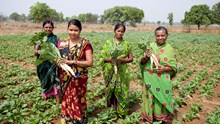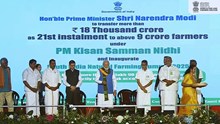
Vanilla, one of the world’s most prized spices, is cherished for its rich, sweet aroma and is a staple in desserts like cakes and ice creams. Recognizing its immense commercial value, Camerina Rabha—a high school educator from Goalpara, Assam—embarked on an unexpected journey into vanilla cultivation. What began with a single sapling from Meghalaya has blossomed into a flourishing enterprise, proving that passion and perseverance can turn even the smallest ideas into powerful ventures.

Pioneering Techniques and the Challenge of Hand Pollination
Camerina’s journey hasn’t been without challenges. Vanilla plants naturally rely on Mellipona bees for pollination—a species now dwindling due to climate change. As a result, hand pollination becomes essential. Despite her responsibilities as a full-time educator, Camerina begins her day at 4 a.m. to carry out this meticulous process. "The work is tiring," she admits, "but extremely satisfying when I see the plants bloom."
She also shares key insights for quality yield: in a bunch with 12 buds, only 5-6 should be pollinated to ensure the production of Grade A beans—those over 7 inches in size. Vanilla beans are categorized into three grades: A (premium), B (up to 6 inches), and C (below 6 inches), with A-grade fetching the highest market price.
Soil Requirements and Organic Practices
According to Camerina, vanilla thrives in well-drained, organically rich upland soils. Waterlogged areas are to be avoided, as they promote fungal growth in the plant's lower nodes. She recommends using cuttings with at least two nodes for optimal propagation.
In keeping with her commitment to sustainability, Camerina uses kitchen and farm waste along with cocopeat to fertilize her soil. For support structures—since vanilla is a climbing plant—she uses PVC poles wrapped in coconut husk and netting. The entire plantation is covered with shade nets to protect it from extreme weather conditions. She also emphasizes planting before the onset of the monsoon to support healthy growth.
Market Barriers Remain a Concern
Despite her success in cultivation, Camerina faces significant marketing challenges. In Assam, where vanilla farming is still in its infancy, there is limited local demand and infrastructure. While the global market offers Rs 40,000–Rs 50,000 per kilogram for mature vanilla beans, Camerina receives only Rs 20,000 per kg. Green beans fetch even less—just Rs 1,000 to Rs 1,800 per kg when exported to Meghalaya. Addressing these market gaps is crucial to encouraging more farmers to venture into vanilla cultivation.

A Viable Business for Homemakers and Working Women
Vanilla farming, according to Camerina, is particularly well-suited for women seeking flexible yet profitable livelihoods. Once established, a single plant can produce over 1,000 cuttings and up to 2 kg of beans annually from the third year onward. With a plant life of nearly 20 years, the long-term benefits are substantial. She adds that cuttings themselves can be sold for Rs 150–Rs 200 each, creating another income stream.
Camerina’s message is clear: “With a bit of hard work and smart planning, vanilla farming can become a profitable venture for both homemakers and working women. If I can manage it alongside my teaching job, so can you.”
Camerina Rabha’s journey from a high school classroom to the green alleys of her vanilla farm is an inspiring example of innovation meeting determination. Her success in cultivating organic vanilla not only highlights the untapped potential of this high-value crop in Assam but also opens new doors for women looking to pursue independent, sustainable livelihoods. With proper awareness, support, and market access, vanilla farming could become a game-changer in the agricultural landscape of Northeast India.
















